Overview of animation concept September 2021
‘The airplane’ is about the contrast between the dreams of empowerment and happy families expressed by women and men in poor communities in Pakistan have – particularly at the time hey are married – compared with the reality of what happens statistically to very many women over time. And also to disappearance of men’s dreams.
The series were selected because of the powerful single image narratives from participatory workshops. I had good workshop reports on the drawings and background discussions, but few photographs and no video or audio.
The most poignant central image is the image of the woman lying dead in a cemetery with her children crying around her – so many women identified with that. Compared to another drawing by an old woman of her vision of flying in an aeroplane and being a happy couple.
The constructed narrative would have the following elements, not necessarily in linear order and including visions of men as well as women to make the animation more like the realities expressed in the community workshops, and less didactic and obvious than animations focusing solely on women:
- Scene 1 Visions: A couple just married coming down a path together with a series of flashed up dream bubbles of aeroplanes and happy family etc – including men’s visions of a job, taking his wife to the cinema.
- Scene 2 Reality: A sequence of what actually occurred : violence, too many children etc. These could just be sequential still images. Or a series of very short 3-5 frame looped animations. This would also include men’s frustrations and the reasons for their descent into addiction and violence.
- Scene 3 Tragic Result: The shot of the cemetery with the children animated then replicated to show the numbers of women in that situation. With an image of a man distraught at what he had done.
I envisage a contrast between artistic black and white animation in the moving image/film style of Shirin Neshat and Brothers Quay. With drawings animated in charcoal or digital scraperboard, interspersed with found video of life in poor housing urban areas and domestic abuse that confirm the reality of the drawings women and men made.
Sound effects are a challenge and will need to be imported together with appropriate ambient sound from on-line video and library.
‘The airplane’ Creative translation questions and future steps
This animation is still very much at the planning stage, with only a few clips and ideas developed. But a lot of possible styles, images and narratives suggested by other animations without words, and footage film and animation from Pakistan.
Because of the artistic and narrative concept I have, and the need to be innovative rather than didactic, this animation is a much more complex task than the other animations. I wanted to incorporate natural as well as digital media but have only got access to my art studio again in July because of household arrangements during COVID-19. The TVPaint animation is also complex and I needed to take this slowly, after the other animations, because of RSI
Creative translation narrative
This could incorporate elements from popular Pakistani cinema and TV to both reinforce the poignancy and tragedy, but also add an element of culturally relevant fantasy and thinking differently.
- Different possibilities of linear and/or non-linear narrative sequences eg opening with the cemetery scene or the woman jumping of the roof as in one of Shirin Neshat’s films.
- There could be other linking formats eg scenes are pushed, or represented by page turns? or linked with characters moving between frames as in ‘Merlot’? Looped cycles to present repetitions eg addiction and violence from the mobile phone footage.
- Should there be any comedy? If so what? There is nothing comic in any of these community drawings. One possibility would be to end with the woman in a burqa flying high as a pilot like Haroon’s Burqa Avenger – see the gouache painting on the right.
- A key issue is the need to clarify the characters and style – the community drawings are mostly solid marker, but some in more scratchy biro and felt tip.
Technical quality
I would want to animate the drawings in a mix of gouache, Procreate, TVPaint and charcoal and/or scraperboard Stop Motion on my iPhone. The composite them with the mobile phone footage (part rotoscoped?) and audio in Premiere, possibly adding some Creative Effects and lighting in After Effects.
Creative Translation Overview Padlet
Evolution of Animation Experiments to March 2021
The account below gives my notes and more details of my initial animation skills development till March 2021)
For my analysis of community drawings and context from Pakistan see:
What happened to my airplane?’ story line ideas
In terms of storyline, the most poignant central image is the image of the woman lying dead in a cemetery with her children crying around her – so many women identified with that. Compared to the vision of flying in an aeroplane and the happy couple.
The animation could actually be quite simple. It could focus only on women, or more interestingly/accurately/less stereotypically include the visions and situation of men also expressed in Taraqee Foundation:
- Scene 1 Visions: A foreground drawing of a woman with (probably unkempt hair) with a series of flashed up dream bubbles of aeroplanes and happy family etc. This could also include men’s visions.
- Scene 2 Reality: A sequence of what actually occurred : violence, too many children etc. These could just be sequential still images. Or a series of very short 3-5 frame looped animations. This could also include men’s frustrations and the reasons for their descent into violence.
- Scene 3 Tragic Result: The final shot of the cemetery with the children animated then replicated to show the numbers of women in that situation. There could also be an image of a man distraught at what he had done.
Some questions
- should I use the existing community drawings, or do my own versions? for example a simple black on white animation in Islamic calligraphy line, something like the black square animation above?
- should the drawings all be in similar style? or use different line thickness and style to eg represent different degree of power?
- should the story be sequential or eg try reversing the order to start with the cemetery as a shock and possibly repeated at the end, with the middle part explanatory?
- is it possible to incorporate some black humour? eg in the way I portray the hectoring man, and maybe mother-in-law? if so does the whole animation need to be humorous, or just part of it? do I create humour through the images, or contrast image and sound?
- what sounds to use?





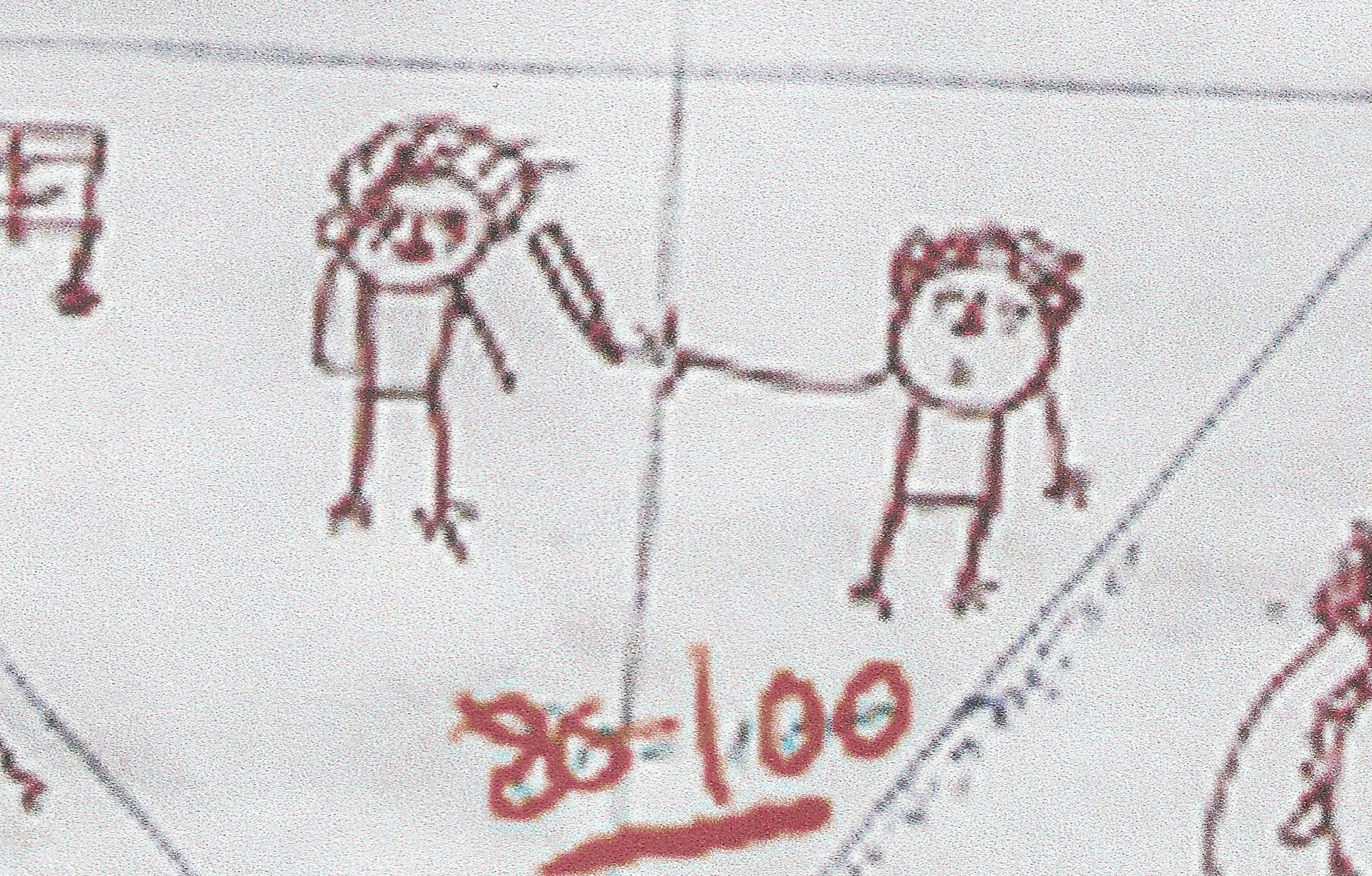
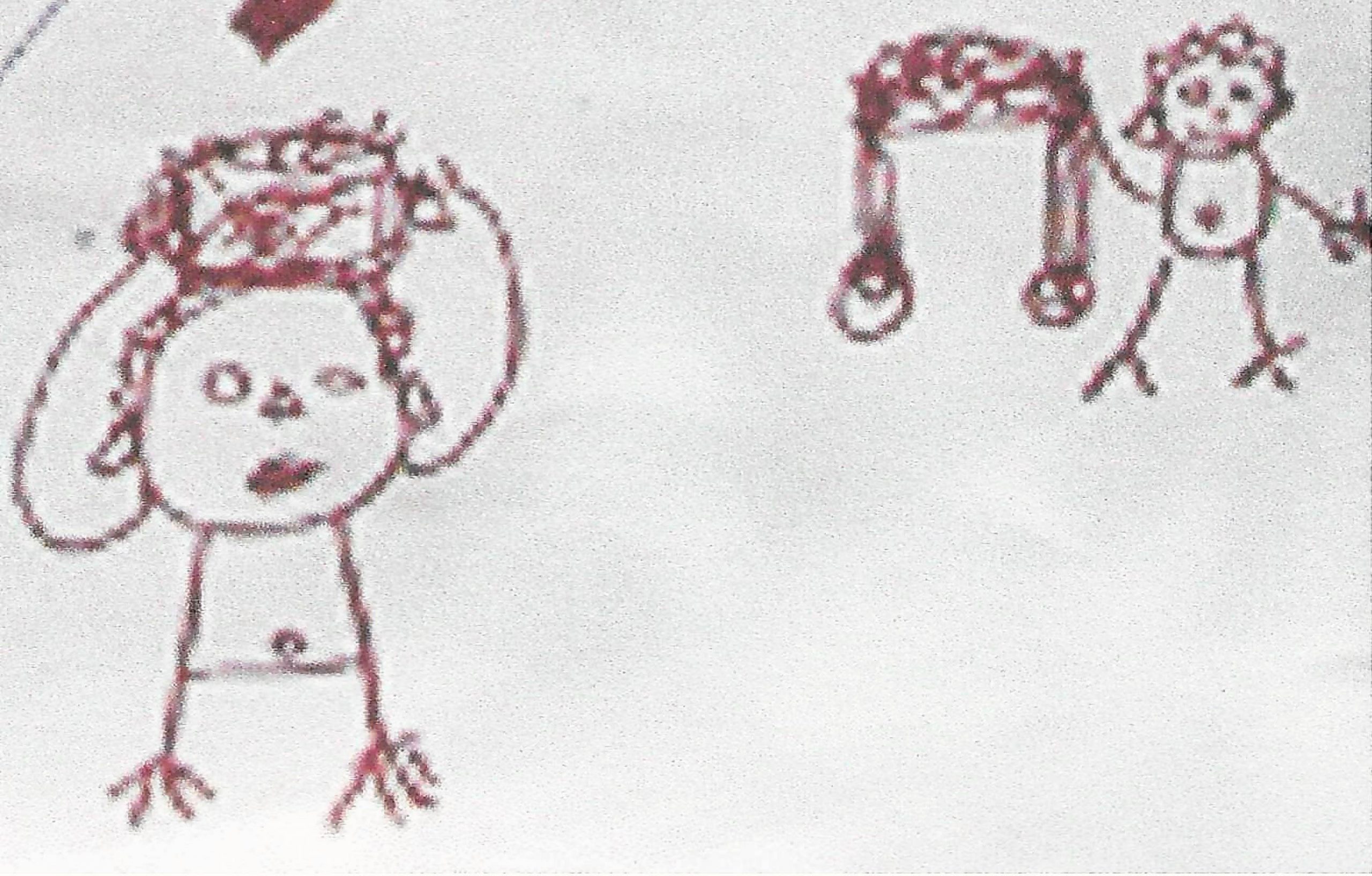





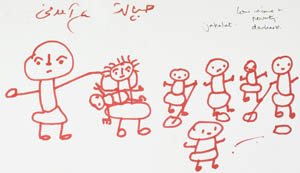
Sketchbook and animation experiments
Sketchbook drawing experiments
I started by printing out large A4 versions of the main diagrams and pasting in my A3 sketchbook. Then annotating them referring to the documentation on meaning. Then I started to look at and replicate some of the different line styles.
!! To photograph and upload. Need to do more when I start to work with different physical media: charcoal, scratchboard, monoprint etc. Mostly my experimentation so far has been digital for this series.
Digital Portraits
I also experimented with digital manipulation of my photographs of Pakistani women. To be used as the basis for drawing, and also integrated as photographs to make the animations grounded in reality.
I had initially had the idea of using a portrait as background for ‘drawings of fate’ like the inscriptions of poems on the portraits by Shirin Neshat.















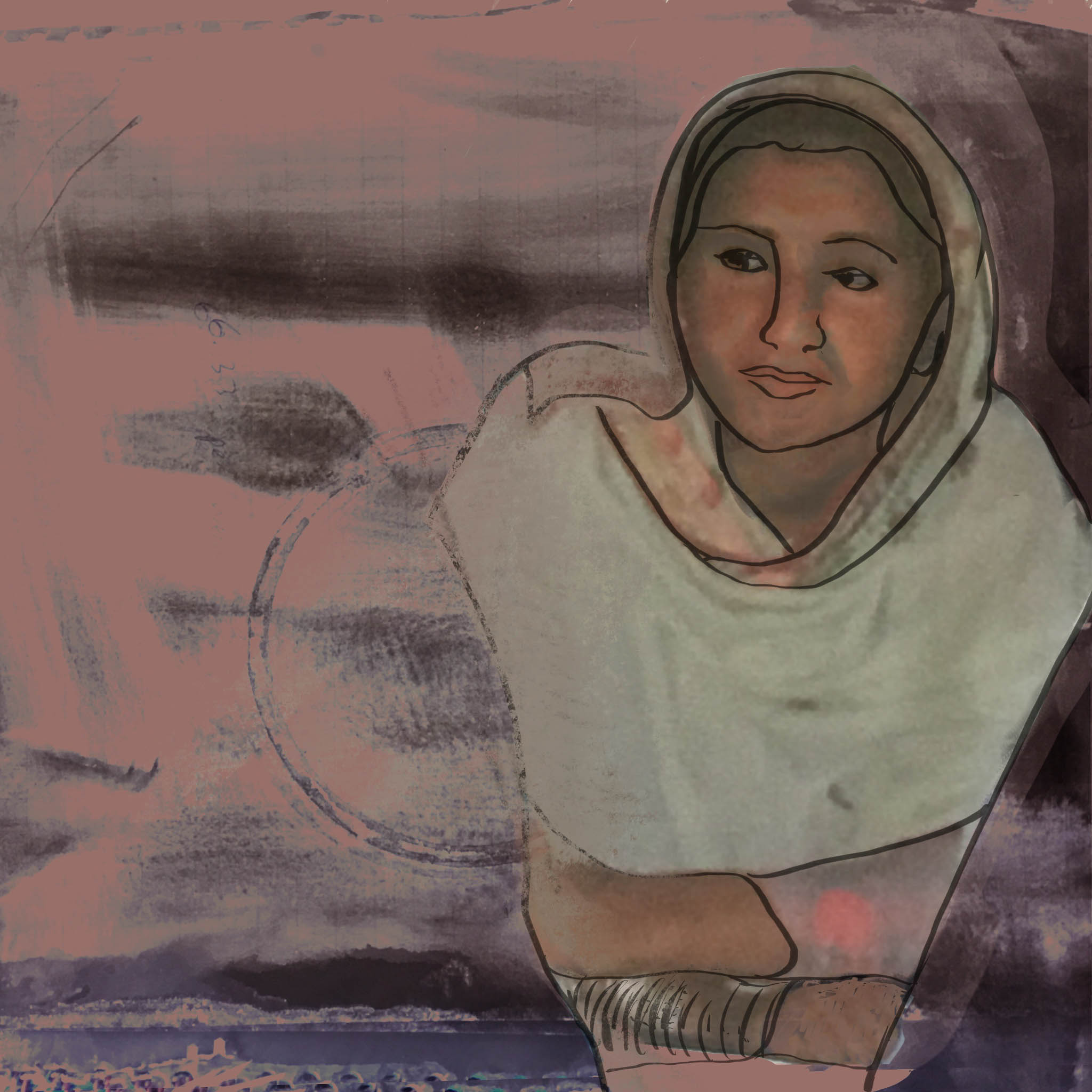

Gouache accidents procreated
For the Pakistan series, I wanted a more textural, dark treatment. In Sketchlog 3 I had gouached over writing on some of the pages, but these had stuck together or left traces of separating sellotape rolls etc. I found these quite atmospheric, and I could see faces and landscapes in the splodges.
So I worked into these in Procreate, cutting and collaging and using curves, colour masks and blend modes. Some of these became very scary faces as backdrops. Others ghostly figures. Some were women airplane pilots in a burqa.













iPad animation experiments
The wide variety of very expressive drawing styles provide a rich set of possibilities for line animation, with different types of abstraction of the figure, clothing, expression etc. I used these drawing as the basis for some of my very first very short animations in Motion Book. .
I also did sketches in my sketchbooks of South Asian women based on photos in a book of Faces as the basis for a series of animations in Rough Animator.

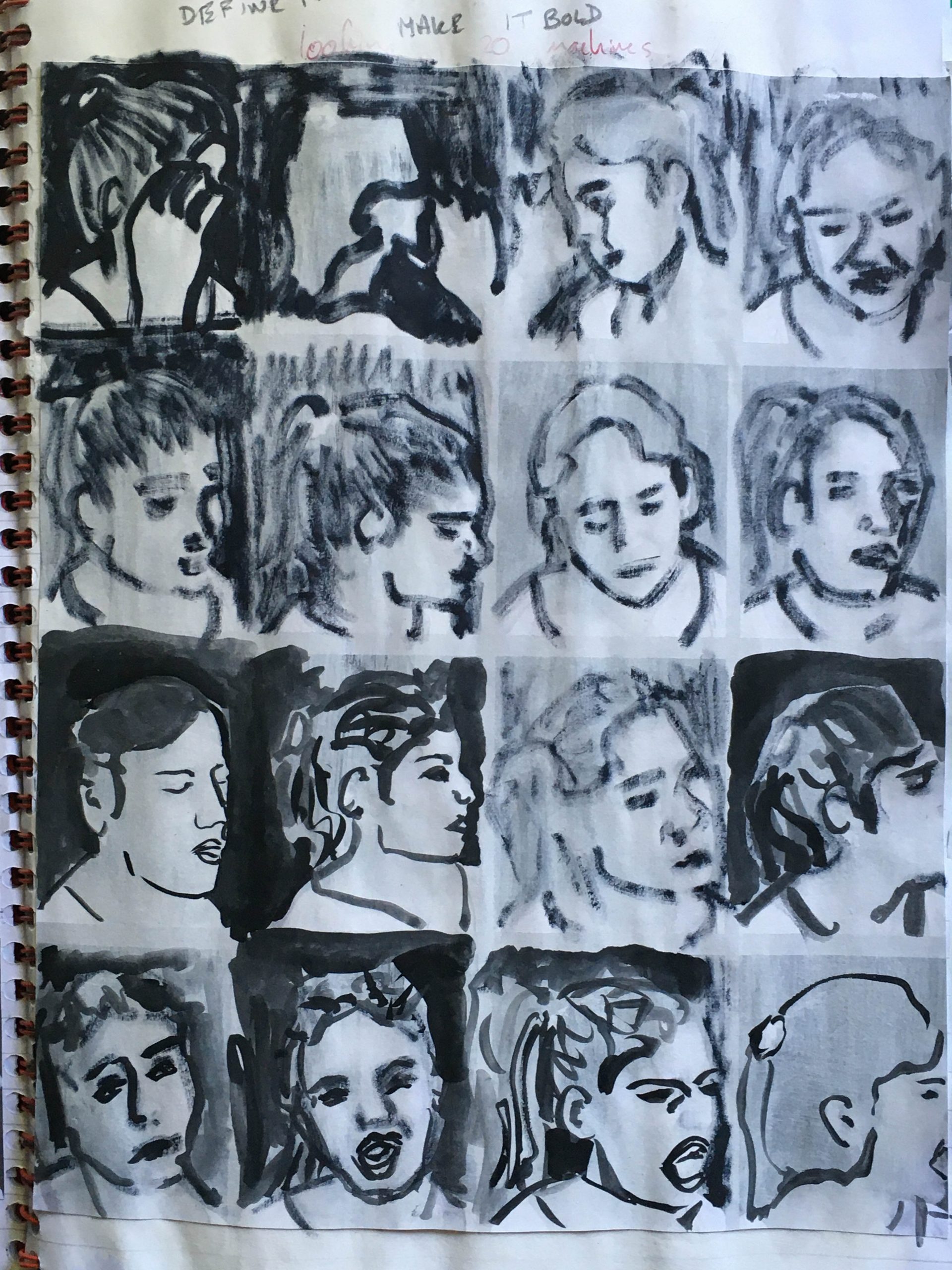


TVPaint walk cycle effects
I replicated some of these effects on walk cycles as part of my learning process in TVPaint. It is possible to get a high degree of control over blurring, ghosting and masking that I intend to apply selectively as backdrops for the drawings in my animation series.
Creative animations so far
Experiment 1: Colour/black and white fairtyale
Using layering and lighting effects. Possibly some linocut for background with animated elements in flat style, or oil brush/gouache style? Composited in TVPaint.
Experiment 2: Violence Scene: Video integration
I found some mobile phone footage of an actual domestic violence incident in Pakistan that I downloaded and started to use as rotoscope. But I actually find the footage itself with some colour manipulation far more effective, with overlaid drawings as an idea to develop further.
The idea of adding more and more drawings is to indicate the scale of the issue in Pakistan, but I need to think how to do this more effectively.
Experiment 3: Cemetery Photographic erasure
Experiment 4: Understated black/grey on white line
A final very simple possibility using just line. Possibly charcoal erasure of the different drawings.
Integrating sound effects from video – eg mobile phone footage of violence. Or maybe a marriage song.
The title ‘since the better’ then adds a layer of loss and past ‘glory’.
Visual inspiration
to explore further
sand art and william kentridge, erasure and transformation
Vicky Smith scraperboard, black monoprint, charcoal stop motion
Catherine Anyango-Grünewald uses a similar technique to Kentridge. She draws repeatedly on the same sheet of paper, but instead of using the residue of a material, she focuses on the durability of the surface that she is drawing on. The disintegration of paper beneath her aggressive drawings expresses her personal frustration and anger at police brutality and echoes the imbalance of power of her subject.




































